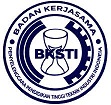Analysis of the modernity, effectiveness and safety of two industrial cutting machines
Abstract
In the face of global competition and technological advancements, modernizing industrial equipment is critical for enhancing productivity and safety in manufacturing. To explore this issue, this study assessed the modernity, effectiveness, and safety of two industrial cutting machines—a power hacksaw and a band saw—in the context of planned organizational changes to improve technological competitiveness. The study used several metrics, including the ABC technology method, Overall Equipment Effectiveness (OEE), and occupational safety levels derived from operator interviews, direct observation, and historical data analysis. The McKinsey matrix was used to summarize the findings. The results showed that both machines were below modern standards, with technology levels of 2.5 (power hacksaw) and 2.4 (band saw) on a 5-point scale. OEE measurements revealed performance gaps, with the band saw and power hacksaw operating at 65.5% and 71% of their full potential, respectively. Occupational safety levels were moderate at 3–3.2 on a 5-point scale, indicating a relatively low risk of accidents. The McKinsey matrix scores (290 and 320 out of 650) further highlight the lack of market competitiveness of the machinery. The study, limited to two small and medium-sized manufacturing companies in Bamenda, Cameroon, where reliance on outdated technology persists, underlines the need for modernization and improved equipment to increase productivity and safety. It contributes to the discourse on Africa's manufacturing challenges by suggesting actionable metrics for moving the sector forward.
Keywords
Full Text:
PDFReferences
Ministry of Economy, Planning and Regional Development, National Development Strategy 2020–2030, 2020.
International Monetary Fund, Cameroon: Selected Issues, IMF Country Rep. 24/052, Feb. 2024.
World Bank, World Development Indicators (WDI): https://databank.worldbank.org/source/world-development-indicators
M. Ingaldi and M. Mazur, “Evaluation of the technological modernity of the machines used in the metallurgical industry,” Mater. Res. Proc., vol. 24, pp. 118–125, 2022, doi: 10.21741/9781644902059-18.
S. Radosevic and E. Yoruk, “Why do we need a theory and metrics of technology upgrading?,” Asian J. Technol. Innov., vol. 24, no. sup1, pp. 8–32, 2016, doi: 10.1080/19761597.2016.1207415.
Z. Dou et al., “The competitiveness of manufacturing and its driving factors: A case study of G20 participating countries,” Sustainability, vol. 13, no. 3, p. 1143, 2021, doi: 10.3390/su13031143.
Y. Sun et al., “How environment and technology affect the regional manufacturing industry development,” Heliyon, vol. 10, no. 15, 2024, doi: 10.1016/j.heliyon.2024.e35321.
E. Aryeetey and P. T. Baffour, “African competitiveness and the business environment: Does manufacturing still have a role to play?,” J. Afr. Econ., vol. 3, pp. i33–i58, 2022, doi: 10.1093/jae/ejac019.
S. B. Fofana et al., “Implementation of flexible manufacturing systems in Africa: Multiple case studies in the Gambia and Ghana,” Niger. J. Technol. Dev., vol. 20, no. 1, pp. 91–101, 2023, doi: 10.4314/njtd.v20i1.1401.
T. Fukunishi, International Competitiveness of Manufacturing Firms in Sub-Saharan Africa, IDE Discuss. Paper 2, 2004.
F. Sinkamba, J. M. Matindana, and M. Mgwatu, “Towards lean manufacturing in developing countries: Research gaps and directions in Tanzania,” Tanzania J. Eng. Technol., vol. 42, no. 1, pp. 26–45, 2023, doi: 10.52339/tjet.v42i1.886.
T. Daum et al., “Made in Africa—How to make local agricultural machinery manufacturing thrive,” J. Int. Dev., vol. 36, no. 2, pp. 1079–1109, 2024, doi: 10.1002/jid.3845.
U. C. Chinweze et al., “The legal framework for occupational health and safety in the manufacturing sector: Assessing compliance and enforcement mechanisms in Nigeria,” Pak. J. Criminol., vol. 16, no. 4, pp. 1437–1450, 2024.
M. Ingaldi and S. T. Dziuba, Modernity Evaluation of the Machines Used During Production Process of Metal Products, 24th Int. Conf. Metall. Mater., Tanger, Ostrava, pp. 1908–1914, 2015.
L. D. C. Ng Corrales et al., “Overall equipment effectiveness: Systematic literature review and overview of different approaches,” Appl. Sci., vol. 10, no. 18, p. 6469, 2020, doi: 10.3390/app10186469.
A. L. Tau et al., “Improvement of overall equipment effectiveness through planned equipment maintenance: A case study,” Bus. Manag. Rev., vol. 14, no. 3, pp. 54–65, 2023, doi: 10.24052/BMR/V14NU03/ART-06.
S. T. Dziuba, M. Ingaldi, and M. Kadłubek, “Use of quality management tools for evaluation of the products’ quality in global economy,” in Globalization and its Socio-Economic Consequences, Žilina: Žilinská univerzita, 2016, pp. 425–432.
K. Knop and P. Mikulová, “Evaluation of the level of work safety, advancement and efficiency of the use of machines and devices on labelling and packaging line and an attempt to compare the results using the modified McKinsey matrix,” Syst. Saf.: Hum.-Techn. Facil.-Environ., vol. 1, no. 1, pp. 189–196, 2019, doi: 10.2478/czoto-2019-0024.
R. Stasiak-Betlejewska, “Technological modernity management in anti-corrosion protection processes,” Manuf. Technol., vol. 22, no. 6, pp. 645–654, 2022, doi: 10.21062/mft.2022.090.
A. Kielesińska and M. Pristavka, “The machinery safety management—Selected issues,” Syst. Saf.: Hum.-Techn. Facil.-Environ., vol. 1, no. 1, pp. 45–52, 2019, doi: 10.2478/czoto-2019-0006.
I. O. Kolawole, S. S. Ajemunigbohun, and R. O. Azeez, “Assessing safety culture metrics influencing organisation risk scorecard among selected manufacturing firms in Lagos, Nigeria,” Lapai J. Econ., vol. 7, no. 2, pp. 172–189, 2023, doi: 10.4314/lje.v7i2.13.
C. Benson et al., “The impact of interventions on health, safety and environment in the process industry,” Heliyon, vol. 10, no. 1, 2024, doi: 10.1016/j.heliyon.2023.e23604.
S. S. Kessy and R. Raymond, “The roles of occupational health and safety management system in reducing workplace hazards in Tanzania manufacturing industries,” Univ. Dar es Salaam Lib. J., vol. 16, no. 2, pp. 70–88, 2021, doi: 10.4314/udslj.v16i2.6.
A. S. Vairagkar and S. Sonawane, “Improving production performance with overall equipment effectiveness (OEE),” Int. J. Eng. Res. Technol., vol. 4, no. 2, pp. 700–704, 2015.
B. Mncwango and Z. L. Mdunge, “Unraveling the root causes of low overall equipment effectiveness in the kit packing department: A define–measure–analyze–improve–control approach,” Processes, vol. 13, no. 3, p. 757, 2025, doi: 10.3390/pr13030757.
T. K. Tsapi et al., “Using Ishikawa method in power hacksaw maintenance,” Int. J. Innov. Sci. Res. Technol., vol. 9, no. 2, pp. 128–135, 2024, doi: 10.5281/zenodo.10649929.
T. K. Tsapi, M. K. Tongwa, and B. D. Soh, “Integrating Bowtie analysis into band saw maintenance,” Arid Zone J. Eng. Technol. Environ., vol. 20, no. 3, pp. 633–644, 2024.
K. Knop, “Management of packaging labeling technology in the context of improving the final product quality and work safety,” Syst. Saf.: Hum.-Techn. Facil.-Environ., vol. 3, no. 1, pp. 116–128, 2021, doi: 10.2478/czoto-2021-0013.
D. K. Sudarsana, “A concept model to scale the impact of safety risk in a construction project using a semi-quantitative method,” Civ. Eng. Archit., vol. 9, no. 1, pp. 263–269, 2021, doi: 10.13189/cea.2021.090122.
E. T. Prasetio and A. Oktora, “Evaluation of the effectiveness of die casting machines using overall equipment effectiveness (OEE),” J. Teknol. Manaj., vol. 22, no. 1, pp. 99–106, 2024, doi: 10.52330/jtm.v22i1.239.
W. Setyawan, A. Sutoni, and T. Munandar, “Calculation and analysis of overall equipment effectiveness (OEE) method and six big losses toward the production of corter machines in Oni Jaya Motor,” J. Phys.: Conf. Ser., vol. 1764, no. 1, p. 012162, 2021, doi: 10.1088/1742-6596/1764/1/012162.
L. D. C. Ng Corrales et al., “Overall equipment effectiveness: Systematic literature review and overview of different approaches,” Appl. Sci., vol. 10, no. 18, p. 6469, 2020, doi: 10.3390/app10186469.
R. K. Singh, E. J. Clements, and V. Sonwaney, “Measurement of overall equipment effectiveness to improve operational efficiency,” Int. J. Process Manag. Benchmarking, vol. 8, no. 2, pp. 246–261, 2018, doi: 10.1504/IJPMB.2018.090798.
M. Tsakalerou, “GE/McKinsey matrices revisited: A mixed mode tool for multi-criteria decision analysis,” Eur. J. Cont. Econ. & Mgmt., vol. 2, no. 92, 2015, doi: 10.19044/elp.v2no1a5.
K. Knop, “Management of packaging labeling technology in the context of improving the final product quality and work safety,” Syst. Saf.: Hum.-Techn. Facil.-Environ., vol. 3, no. 1, pp. 116–128, 2021, doi: 10.2478/czoto-2021-0013.
R. Stasiak-Betlejewska, L. Parv, and J. Karolczyk, “Technological resources evaluation in the context of the micro-enterprise development,” in MATEC Web Conf., vol. 183, p. 01015, 2018, doi: 10.1051/matecconf/201818301015.
I. N. Chidiebube et al., “Analysis of workshop safety and productivity improvement in an engineering workshop,” Eng. Sci. Technol. J., vol. 5, no. 6, pp. 1930–1934, 2024, doi: 10.51594/estj/v5i6.1193.
M. Kotus et al., “Hazard analysis and risk assessment in metal cutting process,” Multidiscip. Aspects Prod. Eng., vol. 2, no. 1, pp. 382–391, 2019, doi: 10.2478/mape-2019-0038.
DOI: http://dx.doi.org/10.62870/jiss.v11i1.31715
Refbacks
- There are currently no refbacks.
 is supported by
is supported by








